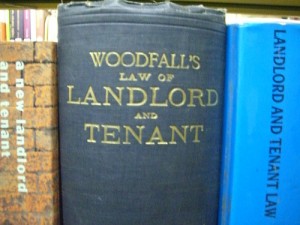Posted by Teresa on February 24, 2011 under Landlord Tips, Tenant Screening & Background Checks | 
 Tenant screening is a several-step process. It begins with the lease application, where you obtain the lease applicant’s signature to run a background and credit check. It ends with phone calls and other verifications to check employers, previous landlords and other references listed by the tenant.
Tenant screening is a several-step process. It begins with the lease application, where you obtain the lease applicant’s signature to run a background and credit check. It ends with phone calls and other verifications to check employers, previous landlords and other references listed by the tenant.
In between is the professional tenant background check, which should include:
- SSN Validation
- OFAC/Patriot Act Search
- Evictions
- Bankruptcies
- Liens & Judgments
- Criminal Records Search
- Sex offender Search
- Credit Check
- Name and Address Validation
Skipping any of these necessary steps is usually a mistake – just ask landlords who have! You might be tempted to forget about calling previous landlords if the credit check comes out clean. You might be tempted to skip the tenant background screening if the applicant tells you up front that he had a drug conviction five years ago. When tenant applicants are so honest up front, they must have nothing else to hide, right? Maybe. Maybe not.
When your gut tells you someone is honest and deserves a chance, don’t listen! Do your due diligence and find out for sure if they can be trusted to live in your rental property, take care of it properly, and pay rent on time every single month.
Conducting due diligence on a potential tenant takes a little time and effort on your part. Experienced landlords will tell you to listen for clues when you’re talking to references and former landlords to determine whether you need to dig any further.
- Clue #1: Former landlord says that applicant was never any trouble and paid rent on time. Would happily rent to them again and again.
- Ask: Why are they moving? How long have you owned the property? How do you spell your name? What is the legal address of the rental property?
- Double-Check: Tax records to make sure the person you are talking to is indeed the owner of the property in question. Potential tenants have friends pose as landlords. How do you know you’re talking to the landlord? Hint: When calling the number, ask “how do you know John Doe?”
- Clue #2: Employer says applicant was never any trouble, makes enough money to cover rent and is still gainfully employed.
- Ask: What is your name and position at the company? Ask even if the name is on the application in front of you. Potential tenants have friends pose as supervisors.
- Double-Check: Google the company name, address, phone number. Call the business and ask for the person you were speaking to – don’t just call the number you were given.
- Clue #3: Tenant applicant cannot provide paystubs.
- Ask: For W2s or tax returns. If you don’t get them, move on to the next applicant.
Verifying tenant references is as important as formal tenant screening. Don’t base important decisions on your gut. Verify, then trust!
Posted by Teresa on February 22, 2011 under Housing Trends | 
 The Obama administration recently revealed its proposal to reduce Fannie Mae (FNMA) and Freddie Mac (FMCC), the mortgage giants that have enabled homeownership for millions of Americans. The report offered three options for replacing the two agencies.
The Obama administration recently revealed its proposal to reduce Fannie Mae (FNMA) and Freddie Mac (FMCC), the mortgage giants that have enabled homeownership for millions of Americans. The report offered three options for replacing the two agencies.
It also makes it clear that rental housing will remain a priority as more renters enter the market in coming years. In the white paper, the government recognizes Americans are giving up homeownership in favor of renting. With a record 37 million rental households and a possible 4.4 million additional by 2015, it’s not something that can be ignored—and the administration is not.
“Americans should have choices in housing that make sense for them and their families. This means rental options near good schools and good jobs,” the report states. It further indicates that finding ways to maintaining funding to the rental market will be “critical.”
One proposed action is expanding the Federal Housing Administration’s support to the multifamily industry, including developing programs to serve hard-to-reach segments, including the smaller properties that comprise one-third of all rental apartments. The report noted that half of renters spend more than one-third of their income on housing, while a quarter spend more than half; a commitment to affordable rental housing is indicated, although the term is not defined.
The National Multi Housing Council, a trade group, responded that reform is needed in the single-family sector, that Fannie and Freddie’s multifamily programs were not part of the financial meltdown and that “they are a vital capital source for the rental housing sector.”
Posted by Teresa on February 19, 2011 under Landlord Tips | 

Verify Before You Hand Over the Keys to a New Tenant
When a new tenant moves in, do you welcome them with open arms, or just hand over the keys? Great tenants are few and far between, and even good tenants make your life much easier. So why not show your appreciation and start the landlord/tenant relationship off right?
Lots of landlords we know present a new tenant with a welcome package of goodies. Some cost them little to nothing out of pocket—say, $10 – $15. Others keep it strictly business and include just the legalities.
If you choose the former, here are a few items to include in a welcome package that will make your new tenant feel right at home:
- A list of emergency phone numbers. This might seem old-fashioned when a simple call to 911 will fetch police, fire and ambulance. But your tenants also need to know how to get in touch with your preferred maintenance people in an emergency. Do include the numbers for your plumber, electrician and general maintenance provider, along with utility companies.
- A floor plan clearly indicating the emergency evacuation route, location of fire extinguishers and smoke alarms and emergency water shut-offs.
- Coupons for local businesses. Stop by the neighborhood pizza shop, dry cleaner, deli and other businesses that might love to have your new tenants for customers. See if you can strike a deal with the pizza shop for discounted gift cards and include one as a gift for move-in day.
- Bus routes, trail and bike maps. More and more tenants are ditching their cars for alternative forms of transportation. Make it easier for them to find the right bus, bike to work, or go for a walk or run on nearby trail.
- A few of life’s necessities, like toilet paper, paper towels and a few extra batteries for the smoke detectors. These low-cost items can really make a big difference when moving into a new place.
Remember, a small effort can actually go a long way to establishing a good relationship with your new tenants. And even if some don’t seem to appreciate it, you might be reaping unseen rewards in the form of fewer problems and happier tenants!
Posted by Teresa on February 16, 2011 under Landlord Tips | 
 Landlords and tenants wrestle with certain issues more than others. Security deposits, rent due dates, and wear and tear are a few that seem to pop up the most. What a landlord considers damage, a tenant might view as “normal wear and tear.” Conversely, a tenant may think water damage is the landlord’s responsibility, while the rental property owner thinks it falls under the umbrella of tenant obligations.
Landlords and tenants wrestle with certain issues more than others. Security deposits, rent due dates, and wear and tear are a few that seem to pop up the most. What a landlord considers damage, a tenant might view as “normal wear and tear.” Conversely, a tenant may think water damage is the landlord’s responsibility, while the rental property owner thinks it falls under the umbrella of tenant obligations.
Here is a guide to help settle which is which when it comes to wear and tear:
| Normal Wear and Tear: |
Tenant Damage: |
| Minor scratch in wood floor |
Gouges or pet scratches in wood floor |
| Carpet indentation from furniture |
Torn carpeting |
| Worn areas in flooring, such as in doorways |
Burns or stains in flooring |
| Dirt on walls and floors |
Cigarette or food stains on walls and floors |
| Minor indentations on walls |
Holes or gouges that require repair |
| Water stains in bathroom |
Water damage from not reporting leaking pipe |
| Surface dust or dirt |
Layers of dirt from not cleaning |
| Dusty window blinds |
Broken window glass |
| Slow drains due to normal use |
Plugged-up drains from misuse |
| Cracks in tile due to age |
Broken tiles from heavy objects being dropped |
| Worn parts on appliances |
Missing parts on appliances |
Clearly, there are limitations to a landlord’s responsibility, whether a tenant doesn’t take proper care of a rental unit or an accident occurs. For example, a tenant may not be totally at fault for his friend’s dropping a bowling ball on the tile floor, but when it happens to someone else’s property, he who lives there must be held responsible.
And if a tenant can’t be bothered to clean her apartment, the landlord is entitled to have it done for her when she moves out—and deduct the fee from the security deposit.
On the other hand, it’s always up to the property owner to perform routine maintenance, which can go a long way to preventing bigger problems, like clogged pipes, water damage and worn out appliances.
Posted by Teresa on February 12, 2011 under Landlord Tips | 
 As vacancy rates drop in many areas, landlords are increasingly phasing out incentives and enticements to attract tenants. It was not too long ago when you’d see banners for “One Month Free Rent” or “Free DVD With 1-year Lease” on apartment buildings.
As vacancy rates drop in many areas, landlords are increasingly phasing out incentives and enticements to attract tenants. It was not too long ago when you’d see banners for “One Month Free Rent” or “Free DVD With 1-year Lease” on apartment buildings.
Now, not only are those signs coming down, but rents are starting to climb as rental inventory drops and demand rises. How does a rental property owner determine what rent to charge? How do the changing conditions in your area affect the rent you can charge?
The obvious answer is to look at what the market will bear. Many landlords begin their research by checking the Fair Market Rent (FMR) for their area. FMR is the amount of money a property will lease for, based on variable factors like economic conditions, location, and local vacancy rates.
The U.S. Department of Housing and Urban Development (HUD) uses Fair Market Rent values to determine the eligibility of rental housing units for housing assistance, known as Section 8 payments. The values are designed to be high enough to ensure an adequate supply of rental units, but low enough to serve as many families as possible.
Once you’ve established the FMR for your area, compare it to what is being charged for similar unites. Check Craigslist.com, local advertising, and sites like ForRent.com, Rent.com, Rental.com and any local sites that cater to your city.
Don’t be tempted to set rent too high or too low for your properties. You are in business to make a profit—and while lower rents may keep your units full, if you’re not making money, you will not survive in the investment property business.
On the other hand, setting rents too high will almost guarantee that good tenants will pass up your property for similar amenities at a lower price. Still, when vacancies are low, you can away with charging a premium rent. Setting rent is a balancing act: keep an eye on the rental market at all times, and adjust your rents accordingly.
Resources:
http://www.huduser.org.
http://rentometer.com
Posted by Teresa on February 9, 2011 under Housing Trends | 
 Arizona state lawmakers have approved to send to the full state Senate a new law requiring landlords and tenants to share responsibility for bedbugs in rental units. Here’s how the proposed law shakes out:
Arizona state lawmakers have approved to send to the full state Senate a new law requiring landlords and tenants to share responsibility for bedbugs in rental units. Here’s how the proposed law shakes out:
Rental property owners will be required to:
- Keep their units free of bedbugs.
- Provide tenants a copy of the law, once passed, as well as with educational materials on bedbugs, including prevention and control measures.
- Arrange for a licensed pest control company to inspect a unit within seven business days of a possible bedbug problem.
- Start the process of mitigating the bedbugs in the rental unit within seven days of finding evidence of infestation.
Tenants are responsible for:
- Notifying landlords in writing or via electronic document of infestations.
- Providing access to their units for inspection and bedbug treatment.
- Complying with the bedbug mitigation protocol established by the pest control company is required. This includes pre- and post-treatment procedures, temporary evacuation of the unit and notifying within three days of recurrence.
Additional Requirements:
- Landlords are prohibited from knowingly leasing a bedbug-infested rental unit.
- Tenants are prohibited from moving bedbug infested materials into a rental unit.
- Only licensed pest control applicators would be allowed to treat bedbugs in multifamily housing.
- Tenants must receive written notification of mitigation treatment three business days or more before it begins.
Perhaps most important is the allocation of financial responsibility. According to the bill, while the landlord is responsible for pest control expenses when tenants comply with their obligations, the responsibility falls to a tenant if they fail to comply. In this case, not only are tenants responsible for mitigating the problem in their own unit, but also any surrounding units that become infested due to non-compliance.
This bill is one of the first we’ve seen that tackles the bedbug problem in rental units. And, it seems to be pretty fair to landlords. What do you think?
We’ll follow the bill as it progresses through the Arizona state Senate.
Posted by Teresa on February 4, 2011 under Landlord Tips, Tenant Screening & Background Checks | 
 Some landlords hire property managers because they are busy with their day jobs, others because they aren’t interested in managing properties, and still others because they simply don’t have enough time.
Some landlords hire property managers because they are busy with their day jobs, others because they aren’t interested in managing properties, and still others because they simply don’t have enough time.
But many would list another reason altogether: they don’t want direct contact with tenants. Plenty of landlords don’t have any issues with tenants knowing who they are or where they live. Others are a bit more on the cautious side, going so far as to refer to themselves as property managers when dealing with tenants, and using only P.O. boxes for correspondence.
How many degrees of separation are enough? And why would a landlord be so cautious? Here are some reasons why some landlords don’t want tenants to know where they live (or even who they are):
Disgruntled tenants: Some landlords fear for their personal safety or that of their families; they worry that an upset tenant will track them down and cause harm. They do not use their home or office address on leases, correspondence or any other paperwork the tenant will see.
Privacy: Some rental property owners tell tenants they are a manager or representative of the owners of the property to keep a few more layers between themselves and their tenants. Even if they are responsible for every action and decision made regarding the tenant and the property, they feel it can ease a tense situation to say, “this is the decision made by the partners,” or “this was my boss’s decision.”
Safety: Tenants sometimes think landlords are wealthy; many landlords worry that when tenants know where they live, they are an easy target for theft.
Keeping it all business: Finally, many landlords feel that their relationship with tenants is strictly business and should remain completely separate from their private lives—including where they reside.
If a tenant really wants to track down their landlord, they probably will. And tenants who go to any length of trouble to discover where you live are likely looking for trouble. Screening tenants can help reduce the risk of harm to you and your property.
Posted by Teresa on February 1, 2011 under Landlord Tips | 

Abandonment is a tricky situation for landlords. It may seem pretty straightforward that abandonment has occurred when a tenant moves furniture and other possessions out of a rental property, hasn’t been seen by the neighbors in a several weeks, and doesn’t return messages—but the law may see it differently.
It’s best to check with a lawyer for the specific laws in your state. But when can a landlord consider a rental unit abandoned, and therefore prepare it to be leased to a new tenant?
Laws vary by state and locality, but here are some general guidelines for landlords:
- A unit could be considered abandoned when the tenant owes rent and has left evidence of abandonment, such as removing furniture and clothing, along with personal care and other items. Again, it depends on the state.
- If the tenant’s rent is current, the unit is not usually considered abandoned, even if the furniture and other possessions have been removed,. You do not want to rent the unit to another tenant, only to see the original tenant return. Wait until the end of the rental period that has been paid before attempting to turn over the unit.
- Cumulative signs, such as a tenant informing the landlord or neighbors that they planned to leave, along with a large amount of uncollected mail, removing all the furniture, and turning off the utilities, could be considered evidence of abandonment.
- Most landlords know to make reasonable efforts to contact the tenant. Telephone calls and emails may be the first methods, but it’s always a good idea to send a certified letter. Make sure to keep copies of letters and notes regarding dates and times of calls and emails.
- If the tenant appears to be gone and didn’t turn in the keys to the rental unit, don’t automatically change the locks. Again, you must first determine whether abandonment has occurred under the laws of your state.
- Tenant property is another area protected by the law. Don’t dispose of a tenant’s property, even if it appears they abandoned it, without checking your local and state laws. Some states allow 30 days for the tenant to claim the property; others allow six months.
It may not seem fair that when abandonment by a tenant occurs, the landlord is responsible for cleaning up the rental unit, gathering all the left-behind property and storing it for the tenant. Fair or not, it’s often the case—and just another part of being a rental property owner!
 Tenant screening is a several-step process. It begins with the lease application, where you obtain the lease applicant’s signature to run a background and credit check. It ends with phone calls and other verifications to check employers, previous landlords and other references listed by the tenant.
Tenant screening is a several-step process. It begins with the lease application, where you obtain the lease applicant’s signature to run a background and credit check. It ends with phone calls and other verifications to check employers, previous landlords and other references listed by the tenant.






